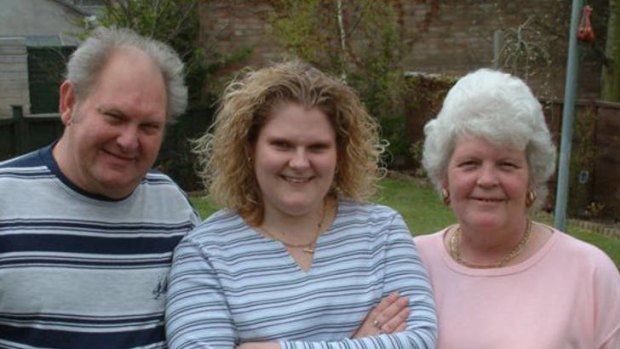Lesley Brown was the mother of the world's first ''test-tube baby'', Louise Brown, who was born on July 25, 1978.
Louise's birth, achieved using techniques developed by Robert Edwards and Patrick Steptoe, was an instant global sensation and a turning point in the treatment of infertility, offering hope to millions of couples who had been unable to have children. Since then, more than 4 million babies worldwide have been born through in-vitro fertilisation. It is an established treatment now, but it had a long and rocky start. The research by Dr Edwards, a biologist, and Dr Steptoe, a gynaecologist, had gone on for 10 years, and the treatment had failed in about 60 couples by the mid-1970s. It had produced only one pregnancy, which was ectopic - growing in a fallopian tube instead of the uterus - and had to be aborted.

Daughter of science ... John and Lesley Brown with their eldest daughter and IVF revelation, Louise, in 2003.
Then Brown and her husband, John, came along. She was a homemaker, he a railroad employee. They had been trying for nine years to conceive. In-vitro fertilisation was ''an incredible leap into the unknown,'' said Michael Macnamee, the director of the Bourn Hall Clinic in Cambridge where the technique was developed. Even if a pregnancy did result, would the baby be healthy? Critics predicted it could lead to terrible abnormalities. But Lesley was determined.
''Every breakthrough in medical science requires somebody to put themselves forward with the passion and commitment she had,'' Dr Macnamee said.
Brown became pregnant at the first try. Once the news emerged, public fascination with her case was unrelenting. She was a quiet woman, Macnamee said, and the attention stunned her.
After Louise's birth, the Browns returned home to find reporters camped on their street. For months Lesley could not leave the house without being chased, so the family moved to a house with a backyard, allowing her to take Louise outside in peace. Four years later they had another daughter, Natalie, also conceived by in-vitro fertilisation, also on the first try.
It took time for in-vitro fertilisation to gain acceptance. Fears it could harm mothers and children lingered. Early success rates were low, and some religious groups viewed the creation of human life in a laboratory as a violation of the sacred order. But overall the techniques have proved safe, and success rates have climbed to rival natural conception. The Catholic Church continues to condemn in-vitro fertilisation.
John Brown died in 2007 at 64. Lesley Brown is survived by her two daughters and three grandchildren.
The New York Times